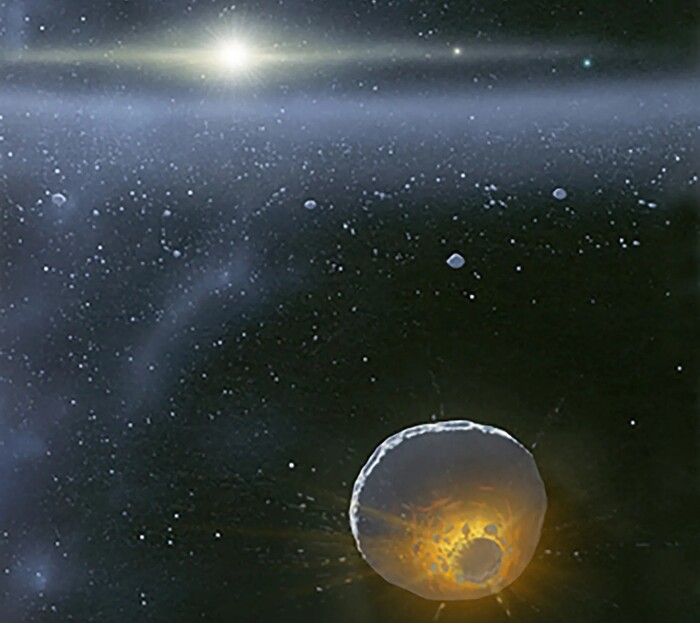The band of
rocky and icy bodies
surrounding the outer Solar System, the so-called
Kuiper belt
, could be
more extensive
than previously assumed: this is suggested by the
first direct measurements of interplanetary dust beyond Neptune and Pluto
, conducted by
NASA's
New Horizons probe.
and published in the journal The Astrophysical Journal Letters.
The study is based on data collected over
three years
, in which New Horizons traveled from a distance of 45 astronomical units (AU) to within 55 AU of the Sun (where one astronomical unit is the distance between the Earth and the Sun , equal to almost 150 million kilometres).
Thanks to the Venetia Burney Student Dust Counter instrument (designed and built by students at the University of Colorado Boulder's Laboratory for Atmospheric and Space Physics), the probe detected much more dust than expected in the region.
This
could mean that there is a new population of objects colliding and producing dust
,
or
that the
pressure exerted by solar radiation is pushing dust from the innermost regions of the belt there
(although this hypothesis is judged less likely).
“The idea that we may have detected an extended Kuiper belt, with a new population of objects colliding and producing more dust, offers
another clue
to solving the mysteries of the more distant regions of the Solar System,” says physicist Alex Doner from the University of Colorado Boulder.
Using ground-based observatories, such as the Japanese Subaru Telescope in Hawaii, researchers have also discovered belt objects that lie beyond what was thought to be its outer edge.
The new data suggests that the boundary may extend at least up to 80 astronomical units, well beyond the 50 AU hypothesized so far.
“These new science results from New Horizons may be the first time a spacecraft discovers a new population of bodies in our solar system,” says Alan Stern, New Horizons science lead at the Southwest Research Institute in Boulder.
“I'm eager to see how far these high levels of Kuiper Belt dust will go.”
Reproduction reserved © Copyright ANSA

